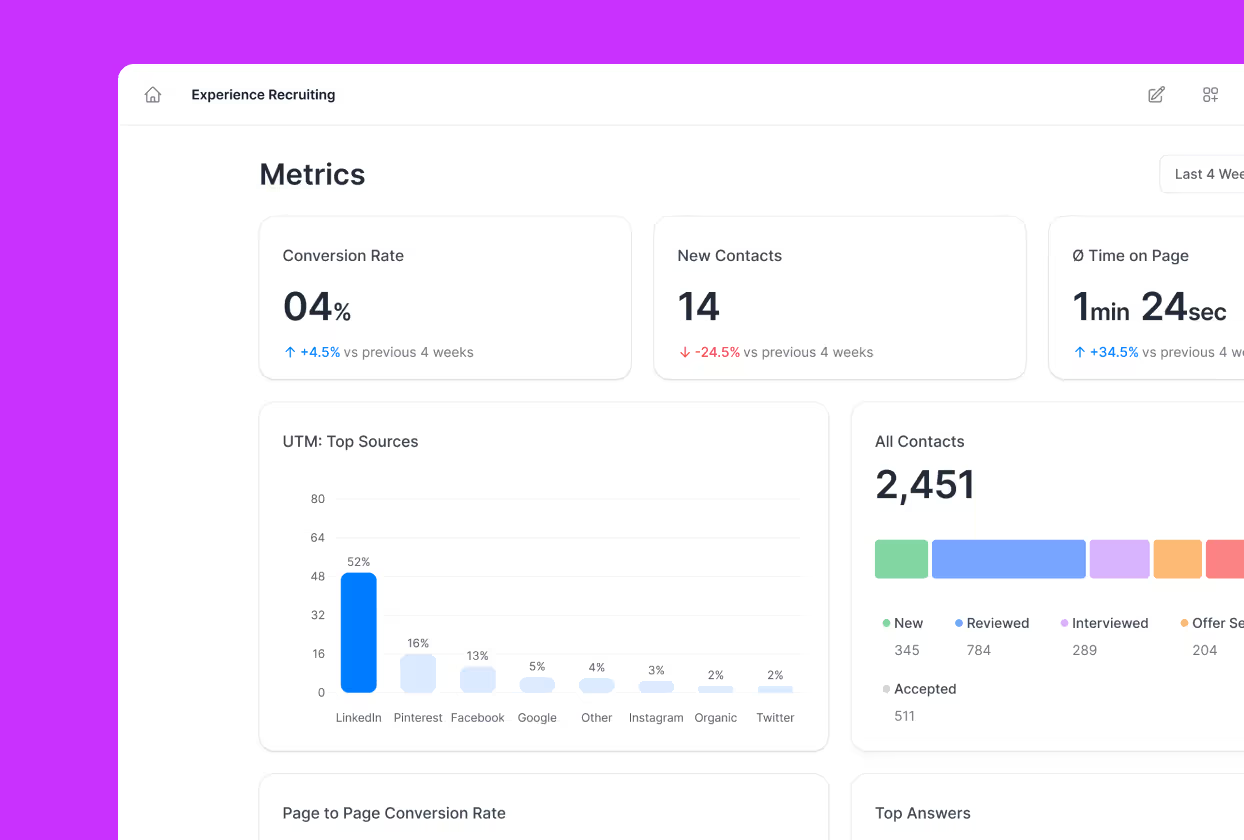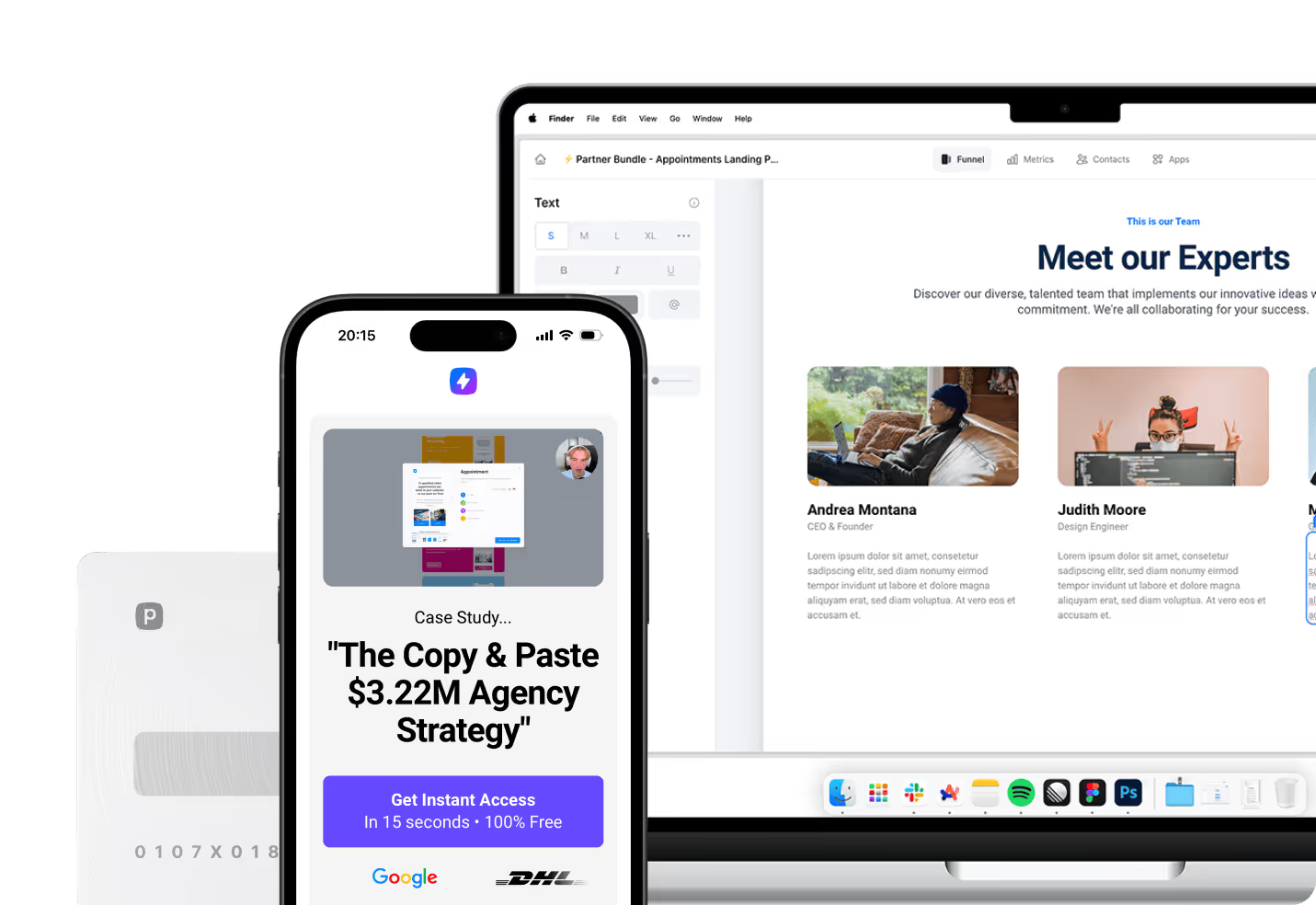Building an email list remains one of the most effective strategies for growing your business in today’s competitive digital landscape. Two platforms have emerged as popular choices for capturing leads and converting website visitors into subscribers: Sumo and LeadPages. Each tool takes a distinctly different approach to lead generation, making the choice between them crucial for your marketing success.
What Makes These Platforms Different
Sumo operates as a comprehensive suite of widget-like apps designed to integrate seamlessly with your existing website. Originally known as SumoMe, this platform focuses on simplicity and accessibility, allowing you to add lead-capturing functionality without rebuilding your site from scratch. The tool emphasizes ease of use and quick implementation, making it particularly attractive for small businesses and content creators who want immediate results without technical complexity.
LeadPages positions itself as a full-featured landing page builder and conversion optimization platform. Rather than simply adding widgets to your current site, LeadPages empowers you to create dedicated, conversion-focused pages specifically designed to capture leads. The platform offers over 500 templates and sophisticated customization options that support complex marketing campaigns and sales funnels.
Both platforms aim to solve the same fundamental challenge—converting website visitors into leads—but their methodologies and target audiences differ significantly. Your choice between them will largely depend on your technical expertise, budget constraints, marketing objectives, and long-term growth plans.
Boost Conversions with Perspective Funnels Today
While Sumo and LeadPages offer distinct approaches to lead generation, Perspective Funnels emerges as a compelling modern alternative that bridges the gap between simplicity and sophistication. Unlike traditional platforms that adapt desktop experiences for mobile, Perspective is built mobile-first from the ground up, recognizing that 98.5% of today's audience actively engages on mobile devices. This funnel builder creates an intuitive, app-like experience that naturally aligns with how modern consumers interact with digital content.
The platform distinguishes itself through lightning-fast loading speeds and interactive design elements that maintain visitor engagement throughout the conversion process. Perspective combines built-in CRM capabilities, comprehensive analytics, and advanced personalization features within a single, streamlined interface that eliminates the need for multiple disconnected tools. This integrated approach particularly benefits creators, agencies, and mobile-focused marketers who require the customization depth of enterprise solutions while maintaining the accessibility and speed of implementation that smaller businesses demand. By offering over 160 pre-built funnel templates optimized for mobile performance, Perspective effectively fills the middle ground between Sumo's simplicity and LeadPages' comprehensive feature set.
Core Functionality Comparison
Sumo excels at enhancing existing websites with targeted lead capture tools that require minimal setup time. The platform includes customizable pop-ups, scroll boxes that appear as users navigate down pages, welcome mats for first-time visitors, and smart bars that remain visible throughout the browsing experience. These tools integrate naturally with your current website design while providing multiple touchpoints for lead capture.
LeadPages offers a more comprehensive approach with dedicated landing page creation capabilities alongside pop-ups and alert bars. The platform’s strength lies in its ability to create standalone conversion environments optimized for specific campaigns, product launches, or service offerings. This makes it particularly valuable for businesses running targeted marketing campaigns that require specialized landing pages.
The fundamental difference becomes clear when considering implementation: Sumo enhances what you already have, while LeadPages creates new conversion assets from the ground up.
Pricing Structures That Fit Different Budgets
Budget considerations often play a decisive role in platform selection, especially for startups and small businesses operating with limited marketing resources. Sumo and LeadPages have adopted different pricing philosophies that reflect their target markets and feature sets.
Sumo’s pricing strategy emphasizes accessibility through its generous free plan, which includes essential features like email opt-in forms, customizable designs, visitor targeting, social sharing capabilities, and basic analytics. This free tier supports up to 10,000 emails monthly with unlimited subscribers, making it exceptionally valuable for businesses just starting their lead generation journey. The premium plan begins at $49 per month, removing Sumo branding while adding advanced targeting, A/B testing capabilities, and enhanced integrations.
LeadPages operates exclusively on paid subscriptions with three distinct tiers designed for different business sizes and needs. The Standard plan costs $49 monthly and includes core features like conversion-optimized templates, unlimited leads and traffic, and basic email integrations. The Pro plan at $99 monthly adds A/B testing capabilities, payment integrations, and enhanced third-party connections. The Advanced plan offers custom pricing for enterprise-level requirements, including priority support and specialized training.
Value Proposition Analysis
For budget-conscious businesses or those testing lead generation strategies, Sumo’s free plan provides remarkable value without ongoing financial commitment. This approach allows you to experiment with lead capture techniques and measure results before investing in premium features.
LeadPages justifies its higher price point through comprehensive functionality and unlimited page creation capabilities. The platform’s pricing becomes more competitive when compared to alternatives like Unbounce, which starts around $90 monthly, or Instapage, beginning at approximately $199 monthly.
The investment decision should consider not just monthly costs but potential return through improved conversion rates and lead quality. Businesses with established marketing budgets may find LeadPages’ advanced features generate sufficient additional revenue to justify the higher expense.
Feature Sets That Drive Results
The specific features available on each platform determine their effectiveness for different marketing strategies and business objectives. Both Sumo and LeadPages offer robust toolsets, but their focus areas and capabilities vary considerably.
Sumo’s feature set centers on website enhancement tools that integrate seamlessly with existing content management systems. The platform provides multiple ways to capture visitor attention and convert browsers into subscribers:
- List Builder: Mobile-optimized pop-ups with single-click email service integration
- Heat Maps: Real-time visual feedback showing where visitors click and engage
- Social Sharing: Integration with over 16 social platforms for content amplification
- Welcome Mats: Full-screen opt-in forms for maximum impact
- Smart Bars: Persistent header or footer bars for ongoing lead capture
- Contact Forms: Customizable forms for various lead generation scenarios
LeadPages provides a more comprehensive conversion ecosystem with advanced page-building capabilities. The platform’s extensive feature set supports sophisticated marketing campaigns and sales funnels:
- Landing Page Builder: Over 500 professionally designed, conversion-optimized templates
- Checkout Forms: Stripe-powered payment processing for immediate monetization
- Website Builder: Complete site creation with built-in SEO optimization
- Pop-ups and Alert Bars: Highly customizable with advanced triggering options
- A/B Testing: Unlimited split testing for optimization
- Analytics Integration: Comprehensive tracking with Facebook Pixel and Google Analytics
Advanced Capabilities
LeadPages distinguishes itself through sophisticated features like checkout form functionality, which allows simultaneous lead capture and payment processing. This capability proves particularly valuable for businesses selling digital products, courses, or services directly from landing pages.
Sumo focuses on maximizing engagement with existing content through tools like the highlighter feature, which allows visitors to highlight and share specific page sections on social media. This approach drives both lead generation and content amplification simultaneously.
Both platforms offer visitor targeting capabilities, but LeadPages provides more granular control over audience segmentation and personalized messaging based on traffic sources, behavior patterns, and demographic data.
Integration Ecosystems for Seamless Workflows
Modern marketing success depends heavily on how well different tools work together within your technology stack. Both platforms recognize this need but approach integrations differently based on their core philosophies.
Sumo maintains focused integration capabilities that cover essential marketing tools without overwhelming users with excessive options. The platform connects seamlessly with major email marketing services including Mailchimp, HubSpot Marketing Hub, Constant Contact, and others. E-commerce integrations support platforms like Shopify and WordPress, enabling features like cart abandonment recovery and discount code distribution.
LeadPages offers a more extensive integration ecosystem with over 40 direct connections to third-party services. This includes comprehensive email marketing platform support, CRM system connections, webinar platform integrations, and payment processor compatibility. For services without direct integrations, LeadPages connects with Zapier, enabling workflows with thousands of additional applications.
Technical Implementation
Sumo’s integration approach prioritizes simplicity and quick setup, making it accessible even for non-technical users. The platform’s WordPress plugin installation typically takes less than a minute, while integrations with email services require minimal configuration.
LeadPages provides more sophisticated integration options but requires greater technical understanding to fully leverage advanced capabilities. The platform’s WordPress plugin allows seamless publishing of landing pages and forms, while API access enables custom integrations for businesses with specific requirements.
Both platforms support Google Analytics integration for comprehensive tracking, but LeadPages offers additional analytics tools and conversion tracking capabilities that provide deeper insights into campaign performance.
User Experience and Learning Curves
The ease of use and learning curve associated with each platform significantly impacts adoption success and long-term satisfaction. Both Sumo and LeadPages prioritize user experience but cater to different skill levels and technical comfort zones.
Sumo’s interface emphasizes simplicity and intuitive design, making it accessible to marketing beginners and experienced professionals alike. The drag-and-drop editor allows complete customization without coding knowledge, while the streamlined dashboard provides quick access to all essential functions. Installation and initial setup typically require less than five minutes, allowing users to start capturing leads almost immediately.
LeadPages offers two distinct editing experiences: a drag-and-drop editor for visual customization and a static editor for more precise control. While designed to be code-free, the platform has a steeper learning curve due to its extensive feature set and customization options. The template-based approach simplifies initial setup, but mastering advanced features requires time investment and potentially some technical knowledge.
Support and Resources
Sumo provides one-on-one onboarding assistance even for free plan users, helping new subscribers get started quickly and effectively. The platform maintains a knowledge base with tutorials covering common use cases and implementation strategies. Premium users receive priority support and access to more detailed documentation.
LeadPages offers comprehensive support resources including extensive documentation, video tutorials, and guided walkthroughs. The platform regularly hosts webinars and training sessions focused on lead generation best practices and conversion optimization strategies. Higher-tier subscribers receive quick-start onboarding calls and access to dedicated support representatives.
Both platforms recognize that user success depends on proper implementation and ongoing optimization, but LeadPages provides more extensive educational resources for businesses wanting to develop sophisticated lead generation strategies.
Mobile Optimization for Modern Audiences
Mobile traffic now represents more than half of all web visits, making mobile optimization crucial for lead generation success. Both platforms address mobile responsiveness but with different levels of sophistication and customization options.
Sumo takes a streamlined approach to mobile optimization, ensuring all tools automatically adapt to different screen sizes without requiring separate configuration. Pop-ups, scroll boxes, and sharing buttons are designed to be touch-friendly with appropriately sized buttons and input fields. This automatic optimization ensures consistent functionality across devices while maintaining the platform’s emphasis on simplicity.
LeadPages provides more sophisticated mobile optimization capabilities with device-specific preview options and advanced responsive design features. Templates automatically adjust layout and content for optimal display on desktops, tablets, and smartphones. Alert bars intelligently reposition on mobile devices to the “thumb zone” for easier interaction, while forms and checkout processes are specifically optimized for mobile completion.
Performance Considerations
Mobile page loading speed significantly impacts conversion rates, making performance optimization essential for lead generation success. Sumo’s lightweight integration approach minimizes impact on site speed while maintaining full functionality across devices.
LeadPages focuses on optimized page loading speeds through content delivery network integration and image optimization. The platform’s mobile-first design approach ensures landing pages perform well on slower mobile connections while maintaining visual appeal and functionality.
Both platforms recognize that mobile users have different behavior patterns and attention spans compared to desktop users, incorporating these insights into their mobile optimization strategies.
Best Practices for Maximum Success
Implementing either platform effectively requires understanding proven strategies for lead generation and conversion optimization. These best practices apply regardless of which tool you choose but may be implemented differently based on platform capabilities.
Successful lead generation campaigns start with clear value propositions that communicate specific benefits to potential subscribers. Your opt-in forms should clearly explain what subscribers will receive and how frequently they can expect communications. This transparency builds trust and improves long-term engagement rates.
Timing and placement of lead capture elements significantly impact conversion rates. Pop-ups capture visitors who might otherwise leave without subscribing, while scroll-triggered forms engage users who demonstrate interest by consuming your content. Welcome mats work effectively for new visitors, while returning visitors may respond better to subtle alert bars or inline forms.
A/B testing remains crucial for optimization regardless of platform choice. Test different headlines, calls-to-action, form designs, and timing to identify what resonates best with your specific audience. Even small improvements in conversion rates compound over time to generate significant increases in lead volume.
Content Strategy Integration
Lead magnets should align closely with your content strategy and target audience interests. High-value resources like guides, templates, or exclusive content typically generate better results than generic newsletters or promotional offers. The perceived value of your lead magnet directly correlates with conversion rates and subscriber quality.
Segmentation capabilities allow you to deliver more relevant content to different audience segments, improving engagement and reducing unsubscribe rates. Both platforms support basic segmentation, but advanced strategies may require integration with dedicated email marketing platforms.
Follow-up sequences should be planned before launching lead generation campaigns. The immediate experience after subscription significantly impacts long-term engagement, making welcome sequences and initial value delivery crucial for success.
Choosing the Right Platform for Your Business
Different business types and objectives require different lead generation approaches. Understanding which platform aligns best with your specific needs can help guide your selection process and maximize your investment return.
Sumo works exceptionally well for specific business scenarios and marketing objectives. The platform’s simplicity and accessibility make it ideal for various use cases:
- Content creators and bloggers who want to convert readers into subscribers without technical complexity
- Small businesses with limited budgets that need immediate lead generation capabilities
- E-commerce stores looking to reduce cart abandonment and increase customer retention
- Service providers who want to enhance existing websites with lead capture functionality
LeadPages serves businesses with more sophisticated marketing needs and dedicated campaign requirements. The platform excels in scenarios that demand specialized conversion environments:
- Digital product sellers who need integrated payment processing and checkout functionality
- Course creators and educators running webinar funnels and multi-step enrollment processes
- Professional service providers creating client-specific landing pages with customized messaging
- Marketing agencies managing multiple client campaigns requiring advanced testing and optimization
Growth Trajectory Considerations
Small businesses with limited resources might start with Sumo’s free plan and upgrade as their lead generation strategy matures. This approach allows you to test different tactics and measure results before committing to higher-cost solutions.
Growing organizations with increasing lead generation needs might transition from Sumo to LeadPages to access more sophisticated capabilities. This progression path allows businesses to scale their lead generation efforts as their marketing sophistication and budget capacity expand.
Both platforms can play valuable roles within a comprehensive digital marketing strategy, and many successful businesses use multiple tools to address different aspects of their lead generation needs.
Transform Your Lead Generation Strategy Today
Choosing between Sumo and LeadPages ultimately depends on your specific business needs, technical capabilities, and growth objectives. Both platforms offer proven solutions for capturing leads and growing email lists, but their different approaches make them suitable for different scenarios.
Sumo represents the ideal choice for businesses prioritizing simplicity, quick implementation, and budget-friendly solutions. Its generous free plan provides exceptional value for startups, bloggers, and small businesses beginning their lead generation journey. The platform’s straightforward interface and minimal learning curve make it accessible to marketers with limited technical expertise while still providing powerful tools for list building and visitor engagement.
LeadPages stands out for businesses requiring sophisticated lead generation capabilities and dedicated conversion environments. Its comprehensive feature set supports complex marketing campaigns, product launches, and sales funnels that demand specialized landing pages and advanced optimization tools. While requiring greater investment in both cost and learning time, LeadPages offers significantly more flexibility and potential for scaling successful campaigns.
Consider starting with Sumo if you need immediate results with minimal investment, then potentially transitioning to LeadPages as your lead generation strategy matures and requires more advanced capabilities. Both platforms can play valuable roles in a comprehensive digital marketing strategy, and many successful businesses use multiple tools to address different aspects of their lead generation needs. The key is choosing the platform that best aligns with your current requirements while supporting your long-term growth objectives.
For mobile-driven marketers seeking the perfect balance of speed, personalization, and performance, Perspective Funnels represents a compelling modern alternative that delivers enterprise-level capabilities within an accessible, mobile-first framework. This platform proves particularly valuable for businesses operating in today’s mobile-centric environment where conversion optimization and rapid deployment are essential for competitive success.


















